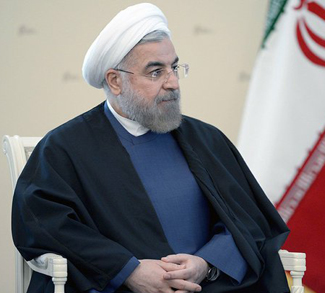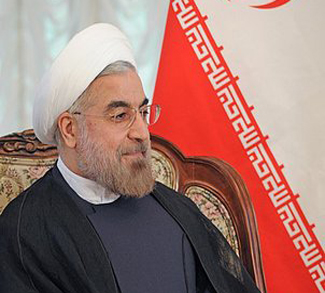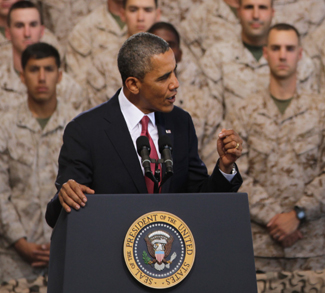This is the final part of our series of editorials aimed at examining the new geopolitical reality in the Middle East following the signing of the Iran nuclear deal.
The Iran nuclear deal is surely one of the most discussed international developments since the Great Recession of 2009, and rightfully so. If implemented, it will alter the geopolitical fabric of the region – this much is beyond dispute. Less certain however are the questions of how it will change the region and whether these changes will be of any benefit to Washington.
I believe the deal is substantively sound, even displaying some realpolitik savvy by seeking a triangular flexibility between Saudi Arabia and Iran for the United States. Yet it’s the arena of perception where this deal struggles, both domestically and internationally, and perception might be all it takes to sink it.
First the substance. There were only two choices on how to approach Iran’s nuclear potential: diplomacy or war. War carried with it a slew of risks. For one the actual logistics of striking Iran’s facilities were daunting (if they weren’t, we might have seen an earlier Israeli strike). In the words of one analyst, it would be “strategically extraordinarily dangerous” for Israel to have launched an attack; less so for the United States, but still at massive cost and without any long-term guarantees. The important thing to note about the military option is that it would have further destroyed public opinion towards the United States (to the Revolution’s ultimate advantage), and the reprieve on Iran’s breakout time would only be temporary (much like it is in the final deal). Iran would inevitably re-build its capacity, and this time the endgame would be crystal clear: get a bomb before they bomb you.
So when the criticism of temporality is leveled towards the deal, we must keep it in mind that both war and diplomacy were temporary solutions. Diplomacy is unique however in that it carries a potential best-case scenario of a peaceful equilibrium that can be further extended in the future.
Another important factor is that the Middle East was already changing before the deal was reached, and these changes are simultaneously a threat to Tehran and a potential impetus for limited cooperated with its “Great Satan.” The Sunni-Shiite cleavage within Islam has been taking on a near-genocidal bent of late, and the widening footprint of Islamic State and other Wahhabi terrorist groups is deeply troubling to the Iranian authorities (keep in mind, Shiites are a minority of around 10% of the global Muslim population).
The deal should not be viewed as a new strategic partnership, or alliance, or any kind of close association between the United States and Iran. Rather it should be viewed simply as the harbinger of a basic level of bilateral cooperation to achieve specific, shared goals in the region, and by establishing this cooperation it’s possible that the United States might one day free itself from its strategic overreliance on Saudi Arabia. In the words of Brookings’ Jeremy Shapiro, pointed out in another editorial we carried last week, this is not about Washington getting into bed with Iran, but rather about it getting out of bed with Saudi Arabia. Herein lies one of the underlying thrusts of the Iran nuclear deal. It looks 20 years into the future and asks why US interests in the Middle East should be held prisoner to the Kingdom when there’s much more to be gained from a flexible triangular alignment.
The deal could trigger a nuclear arms race in the region, true, but so too could the alternatives of an Iranian ‘breakout’ or a pre-emptive strike. Here again the deal is forward-looking. Say military strikes had been the ultimate decision and Iran’s nuclear facilities were taken out of commission for ten years or so – is this a policy template that can be relied on in the future? Will it be up to the United States, largely isolated if it chose to strike, to spend blood and treasure punishing those who acquire technology that, as another one of our editorials pointed out, is as old as the rotary telephone? Because in doing so, Washington would only continue to make a nuclear deterrent all the more appealing to states wanting to protect themselves from Western air power. This is the danger of opting for the stick in nuclear non-proliferation – it may seem like an appealing idea at the time, but it can hurt you over the long run, and nuclear technology will always be a threat to international security; it isn’t going anywhere, so our thinking should be long-term. The Iran nuclear deal may come to be seen as a small step back in non-proliferation (largely dependent on whether the Saudis want to use the proliferation angle to “punish” their erstwhile ally in Washington), but it likely saved a much bigger step back in not opting for the military option.
As for whether or not the Iran nuclear deal will bring about a de-radicalization of Iranian politics, only time will tell. It is worth noting however that revolutionary movements in general are fires that burn brightest at their onset and then fizzle out over time; a war with the United States and Israel would make far better fodder for the fire than a slow and gradual reintegration into the global economy. Anyone who doubts this need only look to China, a state governed by the same revolutionary party that presided over the Cultural Revolution. Coincidentally, it’s also a state that shocked the world back in 1972 by choosing to work with its sworn enemy in the name of advancing common interests.
It’s All in the Eye of the Beholder
In its substance, the deal is sound, but its perception that could ultimately sink it. Sections of the US political establishment are still stuck in a hegemonic moment, believing the United States’ military power and messianic duty to be infinite – call it a Bush Doctrine hangover. The lessons of a rising China and two expensive and strategically short-sighted wars in the past decade seem to be lost on them. For these people, the ayatollah tweeting an image of Obama with a gun to his head is an unacceptable lack of deference to US power in the region. It makes them angry, and it makes them want to punish the regime, consequences be damned. Their view of geopolitics is backward-looking, to the post-Cold War period when the United States was the sole arbiter of security in the Middle East. This is a view that is increasingly detached from our present reality. And it’s not entirely surprising that this cohort would resist a deal that better situates the United States as a world power competing with other powers in a key region. Nearly all hegemonic transitions in the past have followed this pattern of old mindsets not quite keeping up with new realities, whether it be Rome or Pax Britannica, and historically speaking it never ends well for those who don’t adapt.
There’s also an interesting perceptual sleight at work with Iran’s status as a terrorist state. It is, of course, and few would deny it. But it’s not the only terrorist sponsor in the region, nor is it so qualitatively different from the others to warrant radically different treatment. Its comparative leper status might stem from the deep trauma of the Revolution, or its prolonged lack of a well-funded lobbying and PR presence in Washington, but last time I checked it wasn’t Shiite terrorism that was slowly infecting and radicalizing large swathes of the MENA region. That’s the work of puritanical Wahhabi ideology, a strain of Islam that traces back to the religious establishment in Saudi Arabia. This ideology has been actively exported from the Kingdom since the 1970s, and it has come to form the ideological backbone of such geopolitical nightmares as Islamic State, the Taliban, and al-Qaeda. Strange that it should emanate from an ally of the United States, let alone the one whose interests are being cited as a reason to vote down the Iran nuclear deal.
This is not meant to make apologies for one manifestation of terrorism over another – they’re all equally reprehensible. It’s merely to point out the perception gap that currently exists, where Iran is the one wolf that never bothered to put on its sheep’s clothing.
Then there’s President Obama, the politician who brought us this attempt at rapprochement. As I have argued above, the deal would start to strip the region of its normative signifiers, no more good guys and bad guys, and allow the United States to position itself to benefit from regional competition between Saudi Arabia and Iran – a realist goal if ever there was one. Yet because the deal is coming from President Obama – that peacenik, Nobel Prize-winning, red-line dabbler – it can be portrayed by its opponents as dangerous naivety and even defeatism. This is to be expected since the great diplomatic and political reversals of history have generally been the result of reaching across the ideological spectrum. Nixon could normalize relations with Communist China because he had a hawkish reputation; Obama might be foiled in a similar venture because he’s seen as a dove.
But all this pales next to the biggest perceptual trick of all, the myth that there’s some silver bullet of a policy response towards Iran’s nuclear program and the region as a whole. There’s not; all we have are imperfect options. And the Iran nuclear deal is just that – imperfect, but better than any of the alternatives.
Other editorials in this series:
Nuclear Deal and US Rebalancing: Not a Strategy for Peace
What the Iran Nuclear Deal Means for Israel and the Middle East




